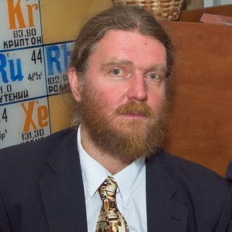Selected Papers from the XIX International Meeting on Crystal Chemistry, X-ray Diffraction and Spectroscopy of Minerals
A special issue of Minerals (ISSN 2075-163X). This special issue belongs to the section "Crystallography and Physical Chemistry of Minerals & Nanominerals".
Deadline for manuscript submissions: closed (15 September 2019) | Viewed by 54576
Special Issue Editor
2. Department of Crystallography, Institute of Earth Sciences, St. Petersburg State University, University Emb. 7/9, 199034 St. Petersburg, Russia
Interests: mineralogy; crystallography; structural complexity; uranium
Special Issues, Collections and Topics in MDPI journals
Special Issue Information
Dear Colleagues,
Technological innovations have brought forth tremendous advances in traditional experimental techniques used in the investigation of composition, structure, and properties of minerals: X-ray diffraction, spectroscopy, and mineral physics. On the other hand, the development of novel theoretical concepts has led to the true Renaissance of theoretical mineralogy and crystallography. The XIX International Meeting on Crystal Chemistry, X-ray Diffraction and Spectroscopy of Minerals will be held on 2–5 July 2019 in Apatity, Kola peninsula, Russia, a famous mineral locality, where the largest number of new mineral species in the history of mineralogy have been discovered. The Meeting is devoted to the memory of great Russian crystallographer, mineralogist, petrologist, and mining engineer Academician E.S. Fedorov (10(22).12.1853–21.05.1919), one of the founders of modern crystallography and discoverer of 230 space groups. It will cover a broad range of topics, including general problems of inorganic crystal chemistry and structural mineralogy, X-ray crystallography, mineral physics and spectroscopy, high-pressure and high-temperature crystal chemistry, theoretical crystal chemistry, and mineralogy.
This Special Issue will include high-quality research papers presented at the conference. We cordially invite you to participate in the Meeting and to contribute your manuscript to this Special Issue.
Prof. Dr. Sergey V. Krivovichev
Guest Editor
Manuscript Submission Information
Manuscripts should be submitted online at www.mdpi.com by registering and logging in to this website. Once you are registered, click here to go to the submission form. Manuscripts can be submitted until the deadline. All submissions that pass pre-check are peer-reviewed. Accepted papers will be published continuously in the journal (as soon as accepted) and will be listed together on the special issue website. Research articles, review articles as well as short communications are invited. For planned papers, a title and short abstract (about 250 words) can be sent to the Editorial Office for assessment.
Submitted manuscripts should not have been published previously, nor be under consideration for publication elsewhere (except conference proceedings papers). All manuscripts are thoroughly refereed through a single-blind peer-review process. A guide for authors and other relevant information for submission of manuscripts is available on the Instructions for Authors page. Minerals is an international peer-reviewed open access monthly journal published by MDPI.
Please visit the Instructions for Authors page before submitting a manuscript. The Article Processing Charge (APC) for publication in this open access journal is 2400 CHF (Swiss Francs). Submitted papers should be well formatted and use good English. Authors may use MDPI's English editing service prior to publication or during author revisions.
Benefits of Publishing in a Special Issue
- Ease of navigation: Grouping papers by topic helps scholars navigate broad scope journals more efficiently.
- Greater discoverability: Special Issues support the reach and impact of scientific research. Articles in Special Issues are more discoverable and cited more frequently.
- Expansion of research network: Special Issues facilitate connections among authors, fostering scientific collaborations.
- External promotion: Articles in Special Issues are often promoted through the journal's social media, increasing their visibility.
- Reprint: MDPI Books provides the opportunity to republish successful Special Issues in book format, both online and in print.
Further information on MDPI's Special Issue policies can be found here.





